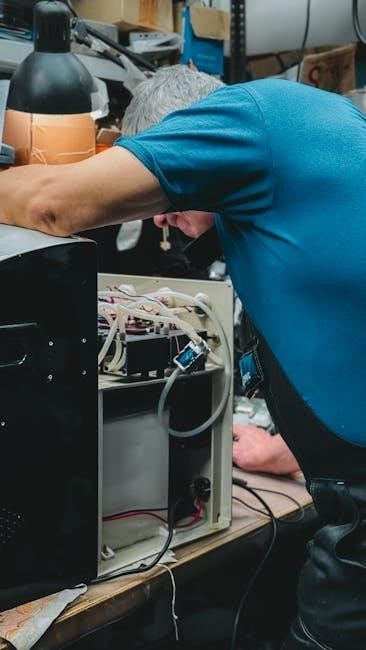Difficulty Shifting Gears
Grinding or Clunking Noises
Slipping Gears
Unusual Whirring or Humming Sounds
Leaking Transmission Fluid
Sudden Jerking Movements
Refusal to Engage Gears
Increased Engine RPM Without Speed Increase
Burning Smell From the Transmission
Shuddering or Vibrations While Driving
One of the most common symptoms of a bad manual transmission is difficulty shifting gears. This can manifest as a stubborn resistance when trying to move the shifter into the desired gear or a feeling of the gears not engaging smoothly. Drivers may notice that the shifter feels loose or unresponsive, making it hard to transition between gears. This issue can occur due to worn-out synchronizers, damaged gear teeth, or a faulty shifter cable. In some cases, low transmission fluid levels or dirty fluid can also cause gears to stick or hesitate. If left unaddressed, this problem can lead to more severe damage, such as gears grinding or failing to engage entirely. Drivers who experience consistent difficulty shifting should inspect the transmission fluid and consider consulting a mechanic to avoid further complications. This symptom is often a clear indicator that the transmission is in need of repair or maintenance.
Grinding or clunking noises while shifting gears are significant indicators of a problematic manual transmission. These sounds typically occur when worn or damaged components within the transmission are failing to engage properly. For instance, damaged gear teeth or synchronizers can cause a grinding noise when attempting to shift into a specific gear. Similarly, a clunking sound may indicate loose or broken mounts that allow the transmission to move excessively. In some cases, low transmission fluid levels or contamination can exacerbate these noises by reducing the lubrication needed for smooth gear engagement. Ignoring these noises can lead to further damage, such as gears locking up or the transmission failing entirely. It is crucial to address these issues promptly by inspecting the transmission fluid and consulting a professional mechanic to prevent costly repairs. Grinding or clunking noises should never be dismissed, as they often signal underlying problems that require immediate attention;

Slipping gears is a concerning symptom of a failing manual transmission. This occurs when the gears fail to stay engaged, causing the transmission to “slip” or disengage unexpectedly. Drivers may notice a lack of acceleration even when the engine RPM increases. This issue often arises due to worn-out synchronizers or damaged gear teeth, which prevent proper engagement. Additionally, low transmission fluid levels or contamination can reduce the hydraulic pressure needed to hold gears in place, leading to slippage. In some cases, a faulty clutch or pressure plate may also contribute to the problem. Ignoring slipping gears can result in further damage to the transmission and potentially lead to complete failure. It is essential to address this issue by checking the transmission fluid and inspecting the gears and clutch system. A professional mechanic should be consulted to diagnose and repair the underlying cause before the problem escalates, ensuring the transmission operates smoothly and efficiently.
Unusual whirring or humming sounds from the transmission are a clear indicator of potential issues. These noises often occur when internal components like bearings, gears, or shafts are worn or damaged. The sounds may vary in pitch and intensity depending on the engine RPM or gear selection. For instance, a whirring noise during acceleration could signal worn-out bearings, while a humming sound might point to damaged gear teeth. In some cases, low transmission fluid levels or contamination can also cause such noises, as the lubrication fails to reduce friction adequately. Ignoring these sounds can lead to further damage, as the transmission’s internal parts continue to degrade. It is crucial to have the transmission inspected by a professional to identify the root cause, whether it is worn components or fluid-related issues. Addressing the problem early can prevent more severe and costly repairs down the line.
Leaking transmission fluid is a common symptom of a bad manual transmission. The fluid is essential for lubricating gears and ensuring smooth operation. If the transmission pan gasket, seals, or lines are damaged, fluid can escape, leading to a noticeable puddle under the vehicle. Drivers may also notice a low transmission fluid level when checking the dipstick or a warning light on the dashboard. Over time, the lack of proper lubrication can cause gears to wear down or overheat, leading to more severe damage. It is crucial to address this issue promptly, as ignoring it can result in costly repairs. A professional inspection can identify the source of the leak, whether it is a faulty gasket, worn seal, or corroded line, and repair it before further damage occurs. Regular maintenance, such as checking fluid levels and condition, can help prevent leaks and ensure the transmission operates efficiently.
Sudden jerking movements while driving can indicate a problem with the manual transmission. This symptom often occurs when the transmission struggles to engage or disengage gears smoothly. Issues such as a worn-out clutch, misaligned shifter components, or low transmission fluid levels can cause this jerking sensation. Drivers may feel an abrupt lurch forward or backward, especially when accelerating from a standstill or shifting gears. In some cases, the jerking may accompany other symptoms like grinding noises or difficulty shifting. If left unaddressed, this can lead to more severe damage to the transmission or clutch system. It is important to have the vehicle inspected by a qualified mechanic to identify the root cause, whether it is a mechanical failure or a fluid-related issue. Prompt repairs can prevent further complications and ensure smooth operation of the manual transmission.
One concerning symptom of a bad manual transmission is when the gears refuse to engage properly. This can happen when attempting to shift into specific gears, such as first gear when starting from a standstill or reverse when trying to back up. The refusal to engage may be accompanied by a grinding or clunking noise, indicating worn or damaged synchronizers or gear teeth. In some cases, the gear may partially engage but then slip out, causing the vehicle to lose power or momentum. This issue can stem from faulty shifter components, low transmission fluid levels, or internal damage to the gears themselves. If left unaddressed, the problem can escalate, leading to complete gear failure and the inability to drive the vehicle. It is crucial to have the transmission inspected and repaired by a qualified mechanic to prevent further damage and ensure proper functionality.
If the engine RPM increases without a corresponding increase in vehicle speed, it could indicate a problem with the manual transmission. This symptom often occurs when the transmission is unable to engage gears properly, causing the engine to rev without transferring power to the wheels. Drivers may notice the tachometer climbing higher than usual while accelerating, even though the vehicle does not gain speed as expected; This issue can be linked to slipping gears, where the gears fail to engage fully due to worn-out synchronizers or clutch problems. Additionally, low transmission fluid levels or dirty fluid can impair the transmission’s ability to maintain proper pressure and engagement. In severe cases, this can lead to complete gear disengagement, leaving the vehicle unable to move. Identifying and addressing the root cause, whether it’s mechanical damage or fluid-related issues, is essential to restore proper transmission function and prevent further deterioration.
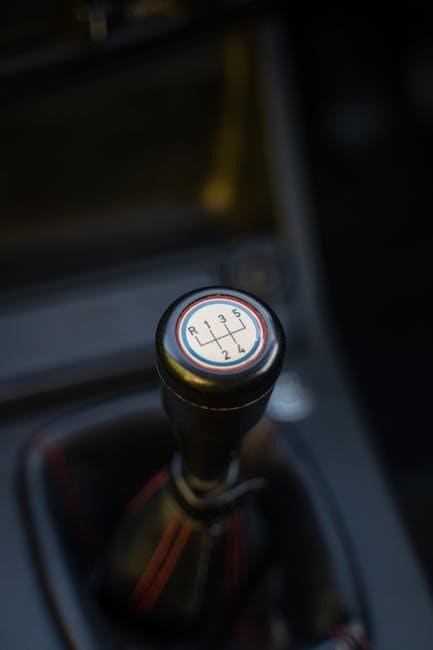
A burning smell from the transmission is a concerning symptom that typically indicates overheating due to excessive friction or inadequate lubrication. This can occur when the clutch is worn out or not disengaging properly, causing it to ride against the flywheel and generate excessive heat. Another possible cause is low or dirty transmission fluid, which fails to cool and lubricate the gears and bearings, leading to overheating. High mileage or excessive wear on transmission components, such as bearings or gears, can also result in this symptom. If left unaddressed, the transmission can suffer severe damage, leading to costly repairs. It’s crucial to inspect the clutch, check the transmission fluid level and condition, and look for any signs of wear or damage to ensure proper functionality and prevent further deterioration.
Shuddering or vibrations while driving can be a noticeable symptom of a bad manual transmission. This issue often occurs when there is misalignment or wear in the drivetrain components, such as the driveshaft or CV joints. Additionally, a malfunctioning clutch or damaged flywheel can cause vibrations, especially when engaging or disengaging gears. Worn-out transmission mounts may also contribute to this symptom, as they fail to securely hold the transmission in place, leading to excessive movement and vibration. In some cases, improper alignment of the clutch or shifter components can cause the vehicle to shudder, particularly during acceleration or gear changes. It is important to address this issue promptly, as prolonged vibrations can lead to further damage to the transmission and other connected parts. Regular maintenance and inspections can help identify and resolve these problems before they escalate.

Causes of a Bad Manual Transmission
Common causes include faulty shifters, damaged gears, low or dirty transmission fluid, and worn-out clutches. Physical damage, improper driving habits, and component wear can also lead to manual transmission failure over time.
Faulty Shifter or Shifter Cable
A faulty shifter or shifter cable is a common cause of manual transmission issues. The shifter cable connects the gearshift to the transmission, and if it becomes loose, damaged, or worn out, it can prevent the transmission from engaging gears properly. Symptoms include difficulty shifting gears, gears slipping out unexpectedly, or the shifter feeling loose and unresponsive. Over time, wear and tear on the cable can lead to misalignment of the gears, causing the transmission to malfunction. If left unrepaired, this can result in further damage to internal transmission components. Regular inspection and maintenance of the shifter and cable can help prevent such issues, ensuring smooth and precise gear changes. Replacing a damaged shifter cable early on can save costly repairs down the line. Proper alignment and lubrication of the shifter mechanism also contribute to its longevity and performance.
Damaged Gears or Synchronizers
Damaged gears or synchronizers within the transmission can lead to a range of problematic symptoms. The gears are essential for transferring power from the engine to the wheels, while the synchronizers ensure smooth shifting between gears. When gears become worn or cracked, they may fail to engage properly, resulting in grinding noises during shifting or complete failure to shift into gear. Similarly, damaged synchronizers can cause the gears to clash or hesitate, leading to a clunking sound or resistance when changing gears. Over time, this can cause increased wear on other components and potentially lead to complete transmission failure. Regular maintenance, such as checking for worn parts and replacing them promptly, can help prevent further damage. Ignoring these issues often leads to costly repairs, emphasizing the importance of addressing gear or synchronizer damage early on to maintain smooth and efficient transmission performance.
Low or Dirty Transmission Fluid
Low or dirty transmission fluid is a common cause of manual transmission issues. Transmission fluid lubricates the gears and synchronizers, ensuring smooth operation. When the fluid level drops, these components can overheat and wear out prematurely. Dirty fluid, often caused by contamination or degradation over time, loses its lubricating properties, leading to increased friction between moving parts. This can result in grinding noises, difficulty shifting gears, and even complete gear failure. Regularly checking and maintaining the correct fluid level, as well as replacing the fluid as recommended by the manufacturer, can prevent these problems. Ignoring low or dirty fluid can lead to costly repairs, as damaged components may need to be replaced. It’s crucial to address fluid issues promptly to ensure the longevity and performance of the manual transmission system.
Worn-Out Clutch or Pressure Plate
A worn-out clutch or pressure plate is another common issue affecting manual transmissions. The clutch facilitates smooth transitions between gears by disconnecting engine power from the transmission. Over time, the clutch and pressure plate can wear down, leading to slipping or failure to engage gears properly. This often results in difficulty shifting, especially when accelerating or climbing inclines. Drivers may notice a spongy or loose clutch pedal, indicating worn components. If left unaddressed, the clutch can fail entirely, making it impossible to change gears and causing the vehicle to stall frequently. Replacing the clutch and pressure plate is typically necessary to restore proper transmission function. Proper driving habits, such as avoiding riding the clutch, can help extend the lifespan of these components. Regular inspections and timely repairs are essential to prevent further damage to the transmission system.
Broken or Loose Mounts
Broken or loose transmission mounts can significantly affect the performance and stability of a manual transmission; Transmission mounts are designed to secure the transmission to the vehicle’s chassis, absorbing vibrations and ensuring smooth operation. If these mounts become loose or break, the transmission can shift out of position, leading to misalignment and improper gear engagement. This often results in clunking or banging noises during acceleration or deceleration. Additionally, loose mounts can cause excessive vibrations, making the vehicle feel unstable while driving. Over time, this misalignment can put extra strain on the transmission’s internal components, potentially leading to premature wear or failure. It’s crucial to inspect and tighten or replace damaged mounts promptly to maintain proper transmission alignment and prevent further damage. Regular maintenance checks can help identify loose or broken mounts before they cause more severe issues. Addressing this problem early ensures smoother driving and extends the lifespan of the transmission system.
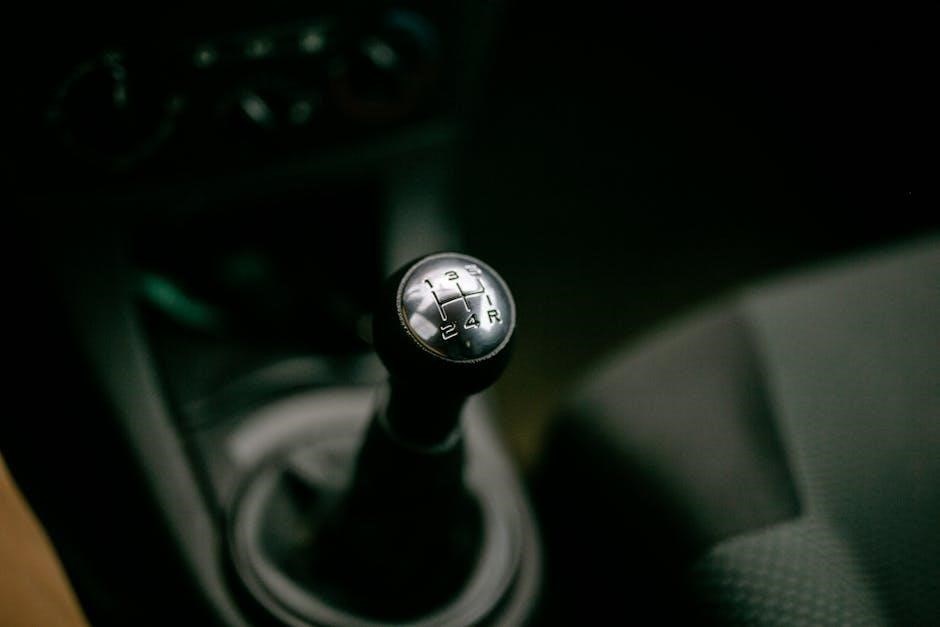
Diagnosing the Issue
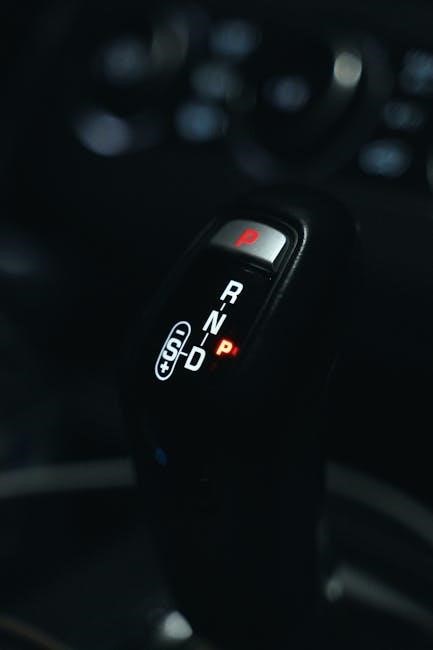
Diagnosing a bad manual transmission involves checking transmission fluid levels and condition, inspecting for physical damage or wear, and using diagnostic tools or scanners to identify specific issues.
Checking Transmission Fluid Level and Condition
Inspecting for Physical Damage or Wear
Using Diagnostic Tools or Scanners
Checking the transmission fluid level and condition is a critical step in diagnosing issues. Locate the transmission fluid dipstick, usually labeled under the hood. The fluid should appear clean and have a light amber or red color. If the level is low, it may indicate a leak or excessive wear. Dirty or blackened fluid suggests contamination, which can damage gears and synchronizers. Low fluid levels can cause slipping or difficulty shifting gears, while dirty fluid may lead to grinding noises. Regularly inspecting the fluid helps identify problems early. If the fluid is dirty or low, it may be necessary to replace it or investigate further for internal damage. This simple check can reveal potential issues before they escalate into major repairs. Always refer to your vehicle’s manual for specific instructions on checking transmission fluid, as the process may vary between models.
Inspecting for physical damage or wear is essential to identify issues with the manual transmission. Start by examining the transmission case and mounts for any visible cracks, dents, or rust. Loose or broken mounts can cause vibrations and noise while driving. Next, check the shifter and shifter cable for signs of wear or damage, as a faulty shifter can lead to difficulty shifting gears. Inspect the clutch pedal and linkage for proper alignment and smooth operation. If the clutch is worn out, it may cause slipping or refusal to engage gears. Additionally, look for any signs of leaks around the transmission seals or gasket, as this can indicate fluid loss and internal damage. Finally, inspect the driveshaft and axles for wear or damage, as they can affect the transmission’s performance. Addressing these issues early can prevent further damage and costly repairs. Regular visual inspections are crucial for maintaining the health of your manual transmission.

Using diagnostic tools or scanners is a modern and efficient way to identify issues in a manual transmission. These tools can connect to the vehicle’s onboard computer to retrieve error codes related to the transmission. For example, codes like P0700 (Transmission Control System Malfunction) or P0720 (Output Speed Sensor Circuit) can indicate specific problems; Some scanners also allow real-time monitoring of transmission sensors, such as speed sensors or solenoid performance. Additionally, advanced tools can perform actuator tests to check the operation of clutches and bands. Mechanics often use these tools to pinpoint issues like faulty solenoids, damaged sensors, or incorrect fluid pressure. While visual inspections are important, diagnostic tools provide a deeper understanding of electronic and hydraulic components. Regular use of these tools can help catch problems early, preventing major repairs. However, not all manual transmissions are equipped with advanced electronics, so older models may require more traditional diagnostic methods. Professional mechanics typically have access to specialized equipment for accurate diagnoses.
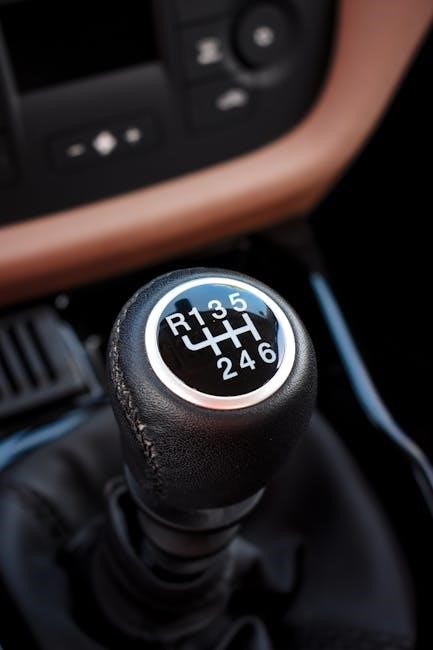
Consequences of Ignoring the Problem
Ignoring manual transmission issues can lead to complete transmission failure, requiring costly repairs or replacement. It may also cause severe damage to gears, bearings, and connected components, resulting in breakdowns and increased repair costs.
Complete Transmission Failure
A neglected manual transmission can ultimately lead to complete failure, rendering the vehicle inoperable. This occurs when internal components like gears, bearings, or synchros are extensively damaged, requiring costly repairs or even a full rebuild. Ignoring symptoms such as difficulty shifting, grinding noises, or fluid leaks allows minor issues to escalate, leading to catastrophic damage. Once the transmission fails, the car may lose the ability to change gears or transfer power to the wheels, leaving it stranded. Repairing or replacing a failed transmission is often expensive, with costs ranging from hundreds to thousands of dollars. Regular maintenance and addressing problems early can prevent this severe outcome. Failure to act on warning signs ensures the transmission will eventually stop functioning, emphasizing the importance of timely intervention to avoid complete breakdown.

